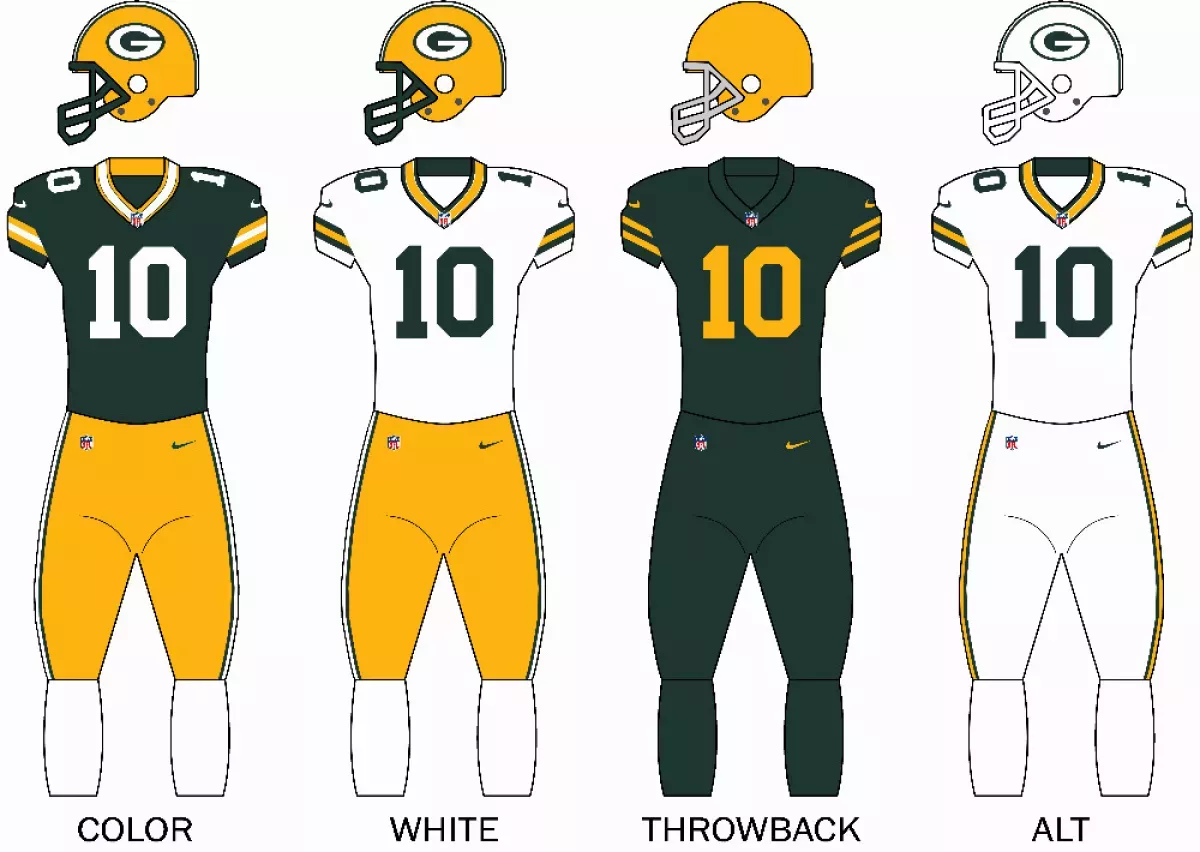The Green Bay Packers are an NFL team based in Green Bay, Wisconsin, competing in the NFC North division. Established in 1919, they are the third-oldest NFL franchise and the only non-profit, community-owned major league professional sports team in the U.S. Their home games have been played at Lambeau Field since 1957. The Packers hold the record for the most wins in NFL history.
August 11, 1919: Green Bay Packers Founded
On August 11, 1919, the Green Bay Packers were founded by Earl "Curly" Lambeau and George Whitney Calhoun.
1919: Franchise Founded
In 1919, Earl "Curly" Lambeau and George Whitney Calhoun founded the Green Bay Packers franchise.
1920: NFL Championship Awarded Based on Standings
From 1920, the NFL championship was awarded based on standings, with no championship game taking place.
1920: Acme Packing Company Purchases Indian Packing
In 1920, the Acme Packing Company purchased Indian Packing and continued to support the Green Bay Packers team. The team played its first NFL season with "ACME PACKERS" emblazoned on its jerseys.
1920: Packers-Bears Rivalry Inception
In 1920, the rivalry between the Green Bay Packers and Chicago Bears began with the inception of both teams, marking one of the oldest and most storied rivalries in the league's history.
August 27, 1921: Granted Franchise in American Professional Football Association
On August 27, 1921, the Green Bay Packers were granted a franchise in the American Professional Football Association, which later became the National Football League.
1921: First Packers-Bears Meeting
In 1921, the Chicago Bears (then known as the Staleys) won the first meeting between the teams, shutting out the Packers 20-0.
1921: Joined APFA
In 1921, the Green Bay Packers joined the American Professional Football Association (APFA), which later became the NFL.
1921: Joined National Football League
In 1921, the Green Bay Packers joined the National Football League (NFL), then known as the American Professional Football Association (APFA).
1921: Rivalry Began with Chicago Bears
In 1921, the Green Bay Packers' rivalry with the Chicago Bears began, marking one of the oldest rivalries in U.S. professional sports history.
1923: First Stock Sale
In 1923, the Green Bay Packers had their first ever stock sale, where $5,000 was raised through 1,000 shares offered at $5 apiece.
1923: Original Articles of Incorporation
The original "Articles of Incorporation for the Green Bay Football Corporation", enacted in 1923, specified that should the franchise be sold, any post-expenses money would have gone to the Sullivan-Wallen Post of the American Legion to build "a proper soldier's memorial".
1924: First-Ever Ejection in NFL History
In 1924, the Green Bay Packers-Chicago Bears matchup was notable for featuring the first-ever ejection of players in a game in NFL history. Frank Hanny of the Bears and Walter Voss of the Packers were ejected for punching each other during the game, which Chicago won 3-0.
1925: Move to City Stadium
In 1925, the Green Bay Packers moved to City Stadium after playing home games at Bellevue Park and Hagemeister Park in their early seasons.
1925: Packers Claim First Win Over Bears
In 1925, the Green Bay Packers secured their first win over the Chicago Bears with a score of 14-10.
1927: Near Miss in NFL Title
In 1927, the Green Bay Packers nearly won the NFL title.
1928: First Packers-Giants Meeting
In 1928, the Green Bay Packers and New York Giants first met, marking one of the oldest regular matchups in the league.
1929: Throwback Jersey Modeled After 1929 Season
During the 2010 season, the Packers paid tribute to their historical roots with a throwback jersey modeled after that worn by the club in 1929, during its first championship season. The jersey was navy blue with a gold circle and navy numbers, again making the Packers "the Blues".
1929: Won First NFL Title
In 1929, the Green Bay Packers claimed their first NFL title with an undefeated 12-0-1 season.
1929: First of Three Consecutive NFL Titles
In 1929, the Packers won the first of three consecutive NFL titles under Curly Lambeau.
1930: First Packers-Lions Meeting
In 1930, the Green Bay Packers first met the Detroit Lions (then known as the Portsmouth Spartans), marking the beginning of one of the oldest regular matchups in the NFL.
1930: Repeated as League Champions
In 1930, the Green Bay Packers repeated as league champions.
1931: Repeated as League Champions
In 1931, the Green Bay Packers repeated as league champions.
1931: Third Consecutive NFL Title
In 1931, the Packers won their third consecutive NFL title under Curly Lambeau.
1932: Annual Games Begin
Since 1932, the Green Bay Packers and the Detroit Lions have met at least twice a season, without any canceled games between both rivals.
1932: NFL Championship Awarded Based on Standings
Until 1932, the NFL championship was awarded based on standings, with no championship game taking place.
1933: NFL Instituted a Post-Season
Before 2003, the Packers had never lost a home playoff game since the NFL instituted a post-season in 1933.
1933: NFL Championship Game Held
From 1933, the NFL held a championship game to decide their champion.
1933: Began Playing Games in Milwaukee
In 1933, the Green Bay Packers started playing a portion of their home games in Milwaukee.
1933: Start of Milwaukee Home Games
In 1933, the Packers started playing part of their home schedule in Milwaukee.
1933: Packers and Lions Become Division Rivals
Since 1933, the Green Bay Packers and Detroit Lions have been division rivals.
1934: Lions Move to Detroit
In 1934, the Portsmouth Spartans moved to Detroit, becoming the Detroit Lions.
1935: Arrival of Don Hutson
In 1935, Don Hutson arrived to the Green Bay Packers, becoming a dynamic offensive weapon.
1936: Won NFL Championship
In 1936, the Green Bay Packers won the NFL Championship.
1937: Throwback Jersey Changed to 1937-1949 Design
In 2015, the throwback jerseys were changed to the navy blue design worn from 1937 to 1949, featuring gold shoulders and numbers.
1939: Won NFL Championship
In 1939, the Green Bay Packers won the NFL Championship.
1940: Hutson Led League in Interceptions
In 1940, Don Hutson, playing as a safety, led the league in interceptions.
1941: Bears Win Postseason Meeting
In 1941, the Chicago Bears defeated the Green Bay Packers in their first postseason meeting, with a score of 33-14. The Bears went on to win the 1941 NFL Championship Game.
1944: Won NFL Championship
In 1944, the Green Bay Packers won the NFL Championship.
1944: First NFL Championship Since 1944
In 1944, the Green Bay Packers won their first NFL Championship since 1944, defeating the New York Giants 37-0.
1945: Hutson Retired
In 1945, Don Hutson retired from the Green Bay Packers, claiming 18 NFL records.
1946: Lived in Rockwood Lodge
In 1946, the Green Bay Packers team members and families lived in Rockwood Lodge.
1947: First Winning Season Since 1947
In 1947, the Green Bay Packers achieved their first winning season since 1947 with a 7-5 record, earning Lombardi the NFL Coach of the Year award.
1947: Season Record
In 1947, the Green Bay Packers had a season record of 12-10-1.
1948: Season Record
In 1948, the Green Bay Packers had a season record of 12-10-1.
1949: Lambeau Departed
Curly Lambeau departed after the 1949 season.
1949: Throwback Jersey Changed to 1937-1949 Design
In 2015, the throwback jerseys were changed to the navy blue design worn from 1937 to 1949, featuring gold shoulders and numbers.
January 24, 1950: Rockwood Lodge Burned Down
On January 24, 1950, Rockwood Lodge, where the Green Bay Packers team members and families lived, burned down. Insurance money paid for many of the team's debts.
1950: Color Change to Kelly Green
In 1950, Green Bay replaced navy blue with kelly green but kept the lighter shade of athletic gold. Navy blue remained as a secondary color.
1950: Throwback Thirds Changed to 1950-1953 Uniforms
In 2021, the Packers changed their throwback thirds to an all-green design, resembling the uniforms worn from 1950 to 1953.
1951: Hutson's Number Retired
In 1951, Don Hutson's number 14 was the first to be retired by the Green Bay Packers.
1951: Adoption of Metallic Gold Plastic Helmets
In 1951, the Green Bay Packers discontinued the use of leather helmets, transitioning to the metallic gold plastic headgear they have used ever since.
1953: Packers play in Milwaukee's County Stadium
From 1953 the Packers played two to three home games each year in Milwaukee's County Stadium.
1953: Throwback Thirds Changed to 1950-1953 Uniforms
In 2021, the Packers changed their throwback thirds to an all-green design, resembling the uniforms worn from 1950 to 1953.
1956: Last Games Played at City Stadium
In 1956, the Green Bay Packers played their last home games at City Stadium, which they had used since 1925. The team won its first six NFL championships at the stadium.
1957: Tradition of Players Riding Bikes Begins
Around 1957, coinciding with the construction of Lambeau Field, a tradition began where young Packers fans bring their bikes to training camp and have players ride them from the locker room to practice at Ray Nitschke Field.
1957: New Stadium Unveiled
In 1957, a new stadium was unveiled for the Green Bay Packers.
1957: Opening of New City Stadium
In 1957, the city of Green Bay responded to the NFL's threat to move the franchise to Milwaukee by building a new 32,150-seat City Stadium, which was the first stadium built exclusively for an NFL team.
1957: Home games played at Lambeau Field
Since 1957, the Green Bay Packers have played their home games at Lambeau Field.
1958: Color Change to Hunter Green
In 1958, Kelly green was replaced by a darker hunter green, which, along with athletic gold, has been the team colors ever since.
1958: Worst Season in Packers History
The Green Bay Packers had a disastrous 1958 campaign under coach Ray "Scooter" McLean, whose 1-10-1 year was the worst in Packers history.
February 2, 1959: Vince Lombardi Hired as Head Coach
On February 2, 1959, Vince Lombardi was hired as the Green Bay Packers' head coach and general manager.
September 27, 1959: First Game Under Lombardi
On September 27, 1959, the Green Bay Packers played their first regular-season game under Vince Lombardi, a 9-6 victory over the Chicago Bears.
1959: Current Uniform Combination Adopted
In 1959, soon after Vince Lombardi's arrival, the Green Bay Packers adopted their current uniform combination of forest green or white jerseys and metallic gold pants.
1960: Continuous Sold-Out Games
In 1960, Green Bay Packers began a streak of selling out every game played in Green Bay, including preseason, regular season, and playoff games. This tradition has continued since then.
1960: Start of Sold-Out Streak for Packers Games
Since 1960, all Packers games have been sold out, demonstrating the high demand for tickets.
1961: Became Known as Titletown
In 1961, Green Bay became known as "Titletown".
1961: Packers-Vikings Rivalry Begins
In 1961, the Green Bay Packers and Minnesota Vikings rivalry began, becoming one of the most intense in the NFL.
1961: The Oval "G" Logo Added
In 1961, the oval "G" logo was added to the Green Bay Packers' helmets. Lombardi asked Packers equipment manager Gerald "Dad" Braisher to design a logo. Braisher tasked his assistant, St. Norbert College art student John Gordon.
December 21, 1962: Featured on Time Cover
On December 21, 1962, the Green Bay Packers were featured as the face of the NFL on the cover of Time magazine, as part of a cover story on "The Sport of the '60s".
1963: Hutson Inducted into Hall of Fame
In 1963, Don Hutson was inducted as a charter member of the Pro Football Hall of Fame.
1963: Finished Second in NFL West
In 1963, the Green Bay Packers finished with an 11-2-1 record but finished second in the NFL West.
1964: Finished Second in NFL West
In 1964, the Green Bay Packers went 8-5-1 and finished second in the NFL West.
1964: University of Georgia "G" Logo Adopted
In 1964, the University of Georgia adopted its "G" logo, similar in concept to the Packers' "G", after Vince Dooley cleared its use with the Packers.
1965: Renaming of City Stadium to Lambeau Field
In 1965, City Stadium was renamed Lambeau Field to honor Curly Lambeau, who had passed away earlier in the year.
1965: Defeated Colts in Playoff
In 1965, the Green Bay Packers defeated the Colts in a playoff for the Western Conference title after a controversial field goal. The Packers won the NFL Championship game against the Cleveland Browns.
1965: First of Three Consecutive NFL Titles Under Lombardi
In 1965, the Packers won the first of three consecutive NFL titles under Vince Lombardi.
1966: NFL Championship Game Followed by Super Bowl
From 1966 to 1969, the NFL Championship Game was followed by the Super Bowl.
1966: Led to First Super Bowl by Bart Starr
In 1966, led by MVP quarterback Bart Starr, the Green Bay Packers went to the first Super Bowl. They defeated the Dallas Cowboys in the NFL Championship and the Kansas City Chiefs in Super Bowl I by a score of 35-10.
1966: Founding of the Green Bay Packers Hall of Fame
In 1966, the Green Bay Packers Hall of Fame museum was co-founded by John P. Holloway and William L. Brault, becoming the first hall of fame built to honor a single professional American football team.
1966: Rematch of the 1966 Contest
The 1967 NFL Championship game, a rematch of the 1966 contest against Dallas, became indelibly known as the "Ice Bowl" as a result of the brutally cold conditions at Lambeau Field.
1967: "Ice Bowl" NFL Championship
In 1967, the Green Bay Packers won the NFL Championship against the Dallas Cowboys in the "Ice Bowl", one of the coldest and most famous football games ever played. They then won Super Bowl II against the Oakland Raiders.
1967: Third Consecutive NFL Title Under Lombardi
In 1967, the Packers won their third consecutive NFL title under Vince Lombardi.
1967: Won Super Bowl II
In 1967, under coach Vince Lombardi, the Green Bay Packers won Super Bowl II.
1968: Relatively Little On-Field Success
For about a quarter-century after Lombardi's departure starting in 1968, the Green Bay Packers had relatively little on-field success.
1968: Highland Avenue Renamed
In 1968, the city of Green Bay renamed Highland Avenue to Lombardi Avenue, placing Lambeau Field at 1265 Lombardi Avenue.
1968: Successful Fair Catch Kick
In 1968, the rivalry featured one of the last successful fair catch kicks, when Bears kicker Mac Percival kicked the game-winning field goal.
1969: Lombardi Left
In 1969, Vince Lombardi left the Green Bay Packers to become head coach and minority owner of the Washington Redskins.
1969: NFL Championship Game Held
Until 1969, the NFL held a championship game to decide their champion.
September 3, 1970: Super Bowl Trophy Named After Lombardi
After Lombardi died of cancer on September 3, 1970, the NFL renamed the Super Bowl trophy the Vince Lombardi Trophy.
1970: AFL-NFL Merger
NFC Championships didn't exist before the AFL-NFL merger in 1970.
1970: Teams Play in National Football Conference
Since 1970, the Green Bay Packers and New York Giants have played in the National Football Conference.
1972: End of Local Blackouts for Packers Games
1972 was the last year home game local telecasts were prohibited regardless of sellout status. Since then, Packers games have not been blacked out locally due to strong attendance and popularity.
1972: Last NFC Central Division Championship Before 1995
Before winning the NFC Central Division Championship in 1995, the Packers last won it in 1972.
1974: Trade for John Hadl
In 1974, acting general manager Dan Devine traded five draft picks to the Los Angeles Rams for aging quarterback John Hadl, who played for the Green Bay Packers for 1 1/2 seasons.
1975: Draft Picks
In 1975, the Green Bay Packers traded away draft picks.
1976: Draft Picks
In 1976, the Green Bay Packers traded away draft picks.
1977: Packers and Buccaneers Become Division Rivals
From 1977 to 2002, the Tampa Bay Buccaneers and Green Bay Packers were division rivals in the NFC Central division.
1982: Shortened Strike Season
In 1982, the Green Bay Packers had one of their five seasons with a winning record during the shortened strike season.
1985: Snow Bowl Game
In 1985, the Green Bay Packers and Tampa Bay Buccaneers played a notable game referred to as the "Snow Bowl".
December 1986: Green Bay Packers Foundation Creation
In December 1986, the Green Bay Packers Foundation was created to assist in activities and programs benefiting education, civic affairs, health services, human services, and youth-related programs.
1989: Establishment of Packers Pro Shop
In 1989, the Packers Pro Shop became the official retail store of the Green Bay Packers.
1989: Packers Wear White Jerseys at Home
In 1989, the Packers wore white jerseys at home for only two games, during the opening two games of the season.
1989: Drafted Tony Mandarich
In the 1989 NFL draft, the Green Bay Packers drafted Tony Mandarich with the second overall pick, ahead of future Hall of Fame inductees Barry Sanders, Derrick Thomas, and Deion Sanders.
1991: Ron Wolf Hired as General Manager
In 1991, Ron Wolf was hired as the Green Bay Packers' general manager, gaining full control of the team's football operations, marking a significant shift in the franchise's direction.
1991: Harlan Preferred Structure
Since 1991 Packers president Bob Harlan preferred that a general manager run football operations and hire a subservient head coach.
1991: Relatively Little On-Field Success
The Green Bay Packers had relatively little on-field success until 1991.
1992: Mike Holmgren Hired as Head Coach
In 1992, Mike Holmgren, the offensive coordinator for the San Francisco 49ers, was hired as the new head coach of the Green Bay Packers.
1992: Packers Finish with 9-7 Record
In 1992, the Green Bay Packers achieved a 9-7 record, showing signs of improvement under the new leadership of Wolf and Holmgren and the addition of Favre.
1992: Acquired Brett Favre
In 1992, the Green Bay Packers acquired Brett Favre, which began a new era of consistent regular-season success.
1992: Brett Favre Acquired and Leads Comeback
In 1992, the Packers acquired Brett Favre from the Atlanta Falcons. Favre stepped in for an injured quarterback Don Majkowski, leading a comeback win against the Cincinnati Bengals.
1993: Reggie White Signs with Packers
In 1993, the Green Bay Packers signed Reggie White, considered one of the most prized free agents in NFL history, enhancing their defense and signifying a commitment to winning.
1994: Packers Play Full Slate in Green Bay
In 1994, improvements and seating expansions at Lambeau Field, along with the Brewers preparing to campaign for their new stadium, prompted the Packers to play their full slate in Green Bay for the first time in 62 years.
1994: Packers Lose in Playoffs Second Round
In 1994, the Packers made it to the second round of the playoffs but lost to the Dallas Cowboys in Dallas.
1994: Cheesehead Pride
In 1994, the term "cheesehead," once an insult, was embraced by Packers fans as a source of statewide pride. Bright orange triangular cheesehead hats became a common sight at games.
1994: Throwback Jerseys for NFL 75th Anniversary
In 1994, to celebrate the NFL's 75th anniversary, the Packers wore "throwback" jerseys, reverting to navy blue and gold colors.
1994: Packers Continued Home Slate in Milwaukee
The Packers continued to play two to three home games each year in Milwaukee's County Stadium until 1994.
1995: Rhodes Experience with Eagles
From 1995 to 1998 Ray Rhodes had moderate success as head coach of the Philadelphia Eagles
1995: Stopped Playing Games in Milwaukee
In 1995, changes at Lambeau Field made it more lucrative for the Green Bay Packers to stay in Green Bay full-time, ending the practice of playing some home games in Milwaukee.
1995: Teams Meet For the Sixth Time
In 1995, the Packers and 49ers met for the sixth time since that season.
1995: Packers Win NFC Central Division Championship
In 1995, the Packers won the NFC Central Division championship for the first time since 1972 and advanced to the NFC Championship Game after defeating the Atlanta Falcons and San Francisco 49ers.
1995: End of Milwaukee Home Games
Up until 1995, the Packers played one pre-season and three regular-season home games each year in Milwaukee.
1996: Packers Win Super Bowl XXXI
In 1996, the Green Bay Packers had a league-best 13-3 record and won Super Bowl XXXI against the New England Patriots 35-21, securing their 12th championship. Desmond Howard was named MVP for his kickoff return touchdown.
1996: Lombardi Trophy Win
In 1996, the Green Bay Packers won the Lombardi Trophy, their first since February 6, 2011 when they defeated the Pittsburgh Steelers.
1996: Won Super Bowl
In 1996, under head coach Mike Holmgren, the Green Bay Packers won a Super Bowl.
November 1997: Beneficiary Change for Franchise Sale
At the November 1997 annual meeting, Green Bay Packers shareholders voted to change the beneficiary of any post-expenses money from the Sullivan-Wallen Post of the American Legion to the Green Bay Packers Foundation, in the event of the franchise being sold.
1997: Foundation Designated as Recipient of Residual Assets
At the team's 1997 annual stockholders meeting, the Green Bay Packers Foundation was designated in place of a Sullivan-Wallen Post soldiers memorial as the recipient of any residual assets upon the team's sale or dissolution.
1997: Sherman Becomes Tight Ends Coach
In 1997, Mike Sherman began his tenure with the Packers, serving as the tight ends coach. He continued in this role in 1998.
1998: Ray Rhodes Success with the Eagles
From 1995 to 1998 Ray Rhodes had moderate success as head coach of the Philadelphia Eagles.
1998: Sherman Continues as Tight Ends Coach
In 1998, Mike Sherman continued in his role as the tight ends coach for the Packers.
1998: Playoff Game
In 1998, the Green Bay Packers and Tampa Bay Buccaneers played a notable playoff game.
1998: Packers Lose to 49ers in Playoffs; Holmgren and White Depart
In 1998, the Packers lost to the San Francisco 49ers in a controversial playoff game due to an uncalled fumble by Jerry Rice. After the game, Mike Holmgren left to coach the Seattle Seahawks, and Reggie White retired (though he later played for the Carolina Panthers).
1998: Brett Favre Referenced in There's Something About Mary
In the 1998 film "There's Something about Mary", the character Mary, played by actress Cameron Diaz, consistently talks about her boyfriend "Brett", who is revealed to be then-Packers' quarterback Brett Favre.
1999: McCarthy Served as Quarterbacks Coach
In 1999, Mike McCarthy served as the quarterbacks coach for the Green Bay Packers.
1999: Sherman Becomes Seahawks' Offensive Coordinator
In 1999, Mike Sherman followed Mike Holmgren to the Seattle Seahawks and became the team's offensive coordinator.
1999: Ray Rhodes Hired and Fired as Head Coach
In 1999, Ray Rhodes was hired as the Green Bay Packers' head coach but was fired after one 8-8 season due to concerns about the team's atmosphere.
2000: Mike Sherman Hired as Head Coach
In 2000, Mike Sherman was hired to replace Ray Rhodes as head coach of the Green Bay Packers. His inaugural season started slowly, but the Packers won their final four games to achieve a 9–7 record.
2000: Reggie White Played For The Panthers
In 2000, Reggie White played one season for the Carolina Panthers after retiring from the Packers in 1998.
April 2001: Wolf Resigns; Sherman Assumes GM Duties
In April 2001, Ron Wolf resigned as general manager, and Mike Sherman assumed the additional duties of general manager alongside his head coaching role.
2001: Regular Season Successes
From 2001 to 2004, the Packers, under Mike Sherman, had respectable regular-season success, led by Brett Favre and Ahman Green.
2001: Throwback Jerseys against Detroit Lions
In 2001, the Packers wore blue and gold 1930s-era throwback uniforms for a Thanksgiving Day game against the Detroit Lions.
2002: Seahawks Relocate to NFC
Following Seattle's relocation to the NFC in 2002, the Packers have faced the Seattle Seahawks multiple times in the playoffs, developing an intense rivalry as well.
2002: End of Division Rivalry
From 1977 to 2002, the Tampa Bay Buccaneers and Green Bay Packers were division rivals in the NFC Central division.
January 4, 2003: Packers Lose Home Playoff Game
On January 4, 2003, the Atlanta Falcons defeated the Packers 27-7 in an NFC Wild Card game, ending the Packers' undefeated home playoff record since 1933.
2003: Extensive Renovation of Lambeau Field
In 2003, Lambeau Field underwent extensive renovations, which included expanding seating, modernizing stadium facilities, and adding an atrium area.
2003: First Playoff Meeting
In 2003, the Green Bay Packers and Seattle Seahawks had their first playoff meeting, during which Seahawks quarterback Matt Hasselbeck threw a game-losing pick-six in overtime after guaranteeing a game-winning drive.
2003: Second Throwback Jersey Game
In 2003, the Packers wore green and gold 1960s-era throwback uniforms for a Thanksgiving Day game against the Detroit Lions, slightly different from the current uniforms.
2003: Reference to 2003 NFL Season
In 2019, when first-year head coach Matt LaFleur joined the team, the Aaron Rodgers and the Packers opened the season by defeating the Chicago Bears in the season's opening game, the first time since 2003 that the league-wide kickoff game did not feature the defending Super Bowl champions.
2004: Sherman's Dual Roles Criticized
By the end of the 2004 season, Mike Sherman's performance as both head coach and general manager was criticized, leading to concerns about the team's depth and Sherman's communication with players.
2004: Regular Season Successes
From 2001 to 2004, the Packers, under Mike Sherman, had respectable regular-season success, led by Brett Favre and Ahman Green.
2004: Family Night Scrimmage Sellout Crowds
In 2004, The Packers' annual Family Night scrimmage at Lambeau Field drew sellout crowds of over 60,000 fans.
2005: Record Attendance at Family Night Scrimmage
In 2005, the Packers' Family Night scrimmage set an all-time attendance record of 62,492 fans when the Buffalo Bills appeared.
2005: Sherman Removed as General Manager; Hired as Head Coach
In early 2005, Mike Sherman was removed from the general manager position but retained as head coach. Ted Thompson was hired as the new executive vice president, general manager, and director of football operations. Following a 4-12 season, Sherman was fired.
2005: Rodgers Draft Pick
Rodgers was the first-round draft pick in 2005.
2006: Missing the Playoffs
After missing the playoffs in 2006, Favre announced he would return for the 2007 season, it would be one of his best.
2006: Mike McCarthy Hired as Head Coach
In 2006, the Green Bay Packers hired Mike McCarthy as their head coach. Despite injuries, McCarthy coached the team to four consecutive wins, finishing with an 8-8 record.
December 2007: Ted Thompson's Contract Extension
In December 2007, Ted Thompson, the Green Bay Packers' general manager, was signed to a 5-year contract extension with the team.
2007: Favre Returns; Packers Finish 13-3
After missing the playoffs in 2006, Brett Favre returned for the 2007 season, leading the Packers to a 13-3 record and a first-round bye in the playoffs.
2007: Brett Favre's Packers Career Ends
At the end of the 2007 season, Brett Favre's tenure with the Green Bay Packers came to an end, concluding a remarkable run that started in 1992.
2007: 1996 Packers Ranked 6th Greatest Super Bowl Team
In 2007, a panel of football experts at ESPN ranked the 1996 Green Bay Packers the 6th-greatest team ever to play in the Super Bowl.
2007: Reference to the 2007 Patriots
In 2011, the Packers tied for the second-most regular-season wins in NFL history, behind only the 2007 Patriots who went 16-0.
January 20, 2008: Packers Lose NFC Championship Game
On January 20, 2008, the Green Bay Packers appeared in their first NFC Championship Game in 10 years, facing the New York Giants. The game was lost 23–20 on a field goal by Lawrence Tynes. This would be Favre's final game as a Packer.
February 5, 2008: Mike McCarthy's Contract Extension
On February 5, 2008, Mike McCarthy, the head coach of the Green Bay Packers, signed a 5-year contract extension with the team.
August 2008: Packers Fans Ranked Second-Best in NFL
In August 2008, ESPN.com ranked Packers fans as the second-best in the NFL, initially tying with the Pittsburgh Steelers, but the Steelers were ranked ahead by John Clayton.
2008: Start of Aaron Rodgers Era
From 2008 to 2022, during the Aaron Rodgers era, the Packers dominated the rivalry, as Rodgers had an 8–2 record against the Cowboys with Green Bay, including a perfect 3–0 record in Dallas.
2008: Aaron Rodgers Takes Over as Starting QB
In 2008, Aaron Rodgers became the starting quarterback for the Green Bay Packers, marking the first time since 1992 (16 years) that someone other than Brett Favre held that position. The Packers finished with a 6-10 record.
2008: Reference to Missing Playoffs in 2008
In 2017, the Green Bay Packers missed the playoffs for the first time since 2008.
March 2009: Favre's Jersey to Be Retired
In March 2009, the Green Bay Packers organization assured fans that Brett Favre's jersey number would be retired, but not during the 2009 season.
April 2009: Packers Draft Raji and Matthews
In April 2009, the Green Bay Packers selected B. J. Raji and Clay Matthews III in the NFL Draft, bolstering their defensive line and linebacker corps.
2009: Reference to 2009 Season
2014 marked the first time since 2009 that the team had a 4,000-yard passer, two 1,000-yard receivers, and a 1,000-yard rusher.
2009: Favre Traded to the Jets
In 2009, Brett Favre was traded to the New York Jets for a conditional draft pick.
2010: Tribute to Historical Roots with Throwback Jersey
During the 2010 season, the Green Bay Packers paid tribute to their historical roots with a throwback jersey modeled after the one worn by the club in 1929 during its first championship season.
2010: Won Super Bowl
In 2010, under head coach Mike McCarthy, the Green Bay Packers won a Super Bowl.
2010: Favre's Consecutive Starts Streak Ends
Late in the 2010 season, Brett Favre's record-breaking streak of consecutive starts as an NFL quarterback finally came to an end. His streak included stints with the New York Jets and Minnesota Vikings after his time with the Packers.
February 6, 2011: Packers Win Super Bowl XLV
On February 6, 2011, the Green Bay Packers defeated the Pittsburgh Steelers 31–25 in Super Bowl XLV, becoming the first No. 6 seed from the NFC to win a Super Bowl. This was the Packers' first Lombardi Trophy since 1996, and Aaron Rodgers was named Super Bowl MVP.
2011: Packers Win Postseason Meeting
In 2011, the Green Bay Packers won their postseason meeting against the Chicago Bears with a score of 21-14. The Packers went on to win Super Bowl XLV.
2011: Packers Regular Season Domination and Playoff Loss
In 2011, the Packers achieved a franchise record of 15–1, tying for the second-most regular-season wins in NFL history. Aaron Rodgers was named NFL's MVP. Despite homefield advantage, they lost their first postseason game to the New York Giants. McCarthy's offensive strategies aided Rodgers in throwing for 4,643 yards and 45 touchdowns. These strategies propelled the Packers to lead the NFL in scoring that year.
2011: Reference to 2011 Season
In 2014, the Green Bay Packers had gone undefeated at home for the first time since the 2011 season.
2012: TV Rights for Pre-Season Games
In 2012, TV rights for pre-season games not nationally broadcast were held by E. W. Scripps Company-owned television stations WGBA-TV in Green Bay and WTMJ-TV in Milwaukee
2012: Packers Season and Playoff Run
In 2012, the Packers finished with an 11–5 record and won their second straight division title. They beat the Minnesota Vikings in the NFC wild-card round 24–10 but lost in the playoffs to the San Francisco 49ers by 45–31. The Packers offense finished the season fifth in points. Rodgers passed for 4,295 yards. The Packers topped the first-ever AP Pro32 rankings.
2012: Packers Refuse Uniform Changes
In 2012, upon the NFL's switch of uniform suppliers to Nike from Reebok, the Green Bay Packers refused any uniform changes outside of the required supplier's logo and new league uniform logos. The Packers declined all of Nike's "Elite 51" enhancements and retained the traditional striped collar of the jersey.
2012: 49ers Defeat Rodgers-Led Packers in Playoffs
Since 2012, the San Francisco 49ers have defeated the Aaron Rodgers-led Green Bay Packers four times in the playoffs.
April 1, 2013: McCarren Becomes WGBA's Sports Director
On April 1, 2013, McCarren became WGBA's official sports director.
2013: Rodgers' Injury and Playoff Appearance
In 2013, Aaron Rodgers suffered a broken collarbone in Week 9, causing him to miss six games. Despite a 7–7–1 record, the Packers won their division and were awarded a home playoff game after Rodgers' return. They lost to the 49ers 20–23 in the playoffs, marking McCarthy's fifth consecutive playoff appearance.
2013: Wear Gold Helmets without Decals Due to NFL Rule
In 2013, the Packers started wearing their gold helmets without any decals due to the then-implementation of the NFL's one-shell rule.
2014: Packers' Successes and Playoff Loss
In 2014, the Packers recorded their 700th victory, went undefeated at home, and led the league in scoring with 486 points. They had a 4,000-yard passer, two 1,000-yard receivers, and a 1,000-yard rusher. McCarthy passed Vince Lombardi on the all-time wins list for the Packers. They went 12–4, clinching their fourth consecutive NFC North division title, and made the playoffs for the sixth straight season. After defeating the Cowboys, they lost to the Seattle Seahawks in the NFC Championship game. Rodgers was named the league's Most Valuable Player for the second time.
2015: Aaron Rodgers Appears in Key & Peele
In 2015, Aaron Rodgers himself appeared in an episode of the sketch comedy television series "Key & Peele", along with Ha Ha Clinton-Dix.
2015: Nelson's Injury and Hail Mary Victory
In 2015, Jordy Nelson tore his ACL during a preseason game and remained inactive for the season. The Packers started 6–0 but then fell to 7–4. On December 3, against the Detroit Lions, the Packers overcame a 20–0 deficit, culminating in a 61-yard Hail Mary touchdown pass from Rodgers to Richard Rodgers, the longest in NFL history.
2015: McCarren Leaves WGBA
In 2015, McCarren left WGBA and became a team employee.
2015: Packers Members Appear in Pitch Perfect 2
In 2015, five members of the Packers (David Bakhtiari, Don Barclay, T. J. Lang, Clay Matthews, and Josh Sitton) made an appearance as an a cappella group in the musical comedy "Pitch Perfect 2".
2015: Throwback Jerseys Changed to Navy Blue 1937-1949 Design
In 2015, the Packers changed their throwback jerseys to the navy blue design worn from 1937 to 1949, featuring gold shoulders and numbers, to properly recreate the original uniforms.
2015: Pro Shop Sales
The Packers Pro Shop reported sales of over $7 million in 2015.
2016: Color Rush Uniform Debuts
In 2016, the Green Bay Packers debuted their Color Rush uniform, featuring white pants and socks with a white uniform. It has been worn five times, four times at home and twice against the Chicago Bears.
2016: Packers Return to Playoffs
In 2019, the Packers returned to the playoffs for the first time since 2016, finishing with a record of 13–3 and securing a first-round bye as the NFC's second seed. They defeated the Seattle Seahawks 28–23 in the NFC Divisional round to advance to the NFC Championship game, where they were defeated 37–20 by the San Francisco 49ers.
2016: WLUK-TV Produced Packers Family Night
Through the 2016 season, the team's intra-squad Lambeau scrimmage at the beginning of the season, marketed as Packers Family Night, was produced for over a decade by WLUK-TV in Green Bay.
2017: Rodgers' Injury and Titletown District Opening
In 2017, Aaron Rodgers suffered a broken collarbone during a Week 6 game. He returned for a Week 15 game but was later placed back on injured reserve after the Packers were eliminated from playoff contention. Backup Brett Hundley struggled in Rodgers' absence. The Packers suffered their first shutout at Lambeau Field in 11 years. The Packers organization opened the Titletown District adjacent to Lambeau Field.
2017: Scripps Originates Packers Family Night Broadcast
In 2017, Scripps and the Packers Television Network began to originate the Packers Family Night broadcast.
2017: Packers' Season and Playoff Run
In 2017, after a 4–6 start, the Packers finished the regular season with a 10–6 record and clinched the NFC North. They won against the New York Giants and Dallas Cowboys in the playoffs but lost to the Atlanta Falcons in the NFC Championship Game.
2018: End of WTMJ Production of Packers Games
At the end of the 2018 season, the Packers brought their broadcast operations in-house, ending WTMJ's production of the games. Previously, WTMJ had produced the games since 1929.
2018: Ron Wolf Inducted into Wisconsin Athletic Hall of Fame
In 2018, Ron Wolf, the most recent Packers contributor to be honored, was inducted into the Wisconsin Athletic Hall of Fame.
2018: McCarthy's Departure and LaFleur's Hiring
In 2018, the Packers failed to qualify for the playoffs. McCarthy was released as head coach and replaced by Joe Philbin on an interim basis. Matt LaFleur was hired as the Packers' new coach following the season.
2019: Packers Hall of Fame Inductees
As of 2019, the Packers Hall of Fame has inducted 162 people, 24 of whom have been inducted into the Pro Football Hall of Fame.
2019: Forbes Ranked Packers
In 2019, Forbes ranked the Green Bay Packers as the 27th-most-valuable sports franchise in the world, with a value of $2.63 billion.
2020: Green Bay Population
As of the 2020 census, the city of Green Bay had a population of 107,395 and 600,000 in its television market.
2020: Packers Win NFC North and Rodgers' MVP Award
In 2020, the Green Bay Packers won the NFC North Division for the second consecutive year and earned a first-round bye. They defeated the Los Angeles Rams in the Divisional Round but lost to the Tampa Bay Buccaneers in the NFC championship. Rodgers won his third MVP award during the season.
2020: Reference to Jordan Love being drafted
In 2023, Jordan Love, who was drafted to the Green Bay Packers in 2020, took over as starting quarterback.
October 27, 2021: End of Packers Association with WTMJ Announced
On October 27, 2021, the Packers announced that it would end its longtime association with WTMJ at the end of the season.
November 2021: Packers Stock Sale
In November 2021, the Green Bay Packers conducted their latest stock sale, selling almost 200,000 shares.
2021: NFC Championship Game
In 2021, the Green Bay Packers and Tampa Bay Buccaneers played in the NFC Championship Game.
2021: Throwback Thirds Changed to All-Green Design
In 2021, the Green Bay Packers changed their throwback thirds to an all-green design, resembling the uniforms worn from 1950 to 1953, to properly recreate those original uniforms.
2022: Community Ownership Structure
As of 2022, the Packers are the only community-owned franchise in North America's four traditional major leagues, held by more than 537,000 stockholders. No one is allowed to hold more than 200,000 shares.
2022: End of Aaron Rodgers Era
From 2008 to 2022, during the Aaron Rodgers era, the Packers dominated the rivalry, as Rodgers had an 8–2 record against the Cowboys with Green Bay, including a perfect 3–0 record in Dallas.
2022: WRNW Becomes Milwaukee Radio Affiliate
In 2022, WRNW became the team's Milwaukee radio affiliate.
2022: NFL's One-Shell Rule Abolished
In 2022, the NFL abolished its one-shell rule, allowing teams to use multiple helmet designs.
2022: Packers Miss Playoffs
In the 2022 season, the Green Bay Packers were eliminated from advancing to the NFL's wild-card playoffs when they lost their last regular-season game 20–16 to the Detroit Lions, finishing with an 8–9 record. This was the first time the team missed the playoffs during Matt LaFleur's coaching stint.
January 2023: Information Date
As of January 2023, this information is current.
2023: Packers Lead Series
As of the 2023 season, the Green Bay Packers lead the all-time series 16–9.
2023: Jordan Love Takes Over as Quarterback and Playoff Run
In the 2023 season, Jordan Love became the starting quarterback after Aaron Rodgers was traded to the New York Jets. The team finished with a 9–8 record, securing 2nd place in the NFC North and the 7th seed in the NFC. The Packers defeated the Dallas Cowboys in their Wild-Card matchup, becoming the first 7th seed team to win a playoff game, but lost to the San Francisco 49ers in the Divisional round. Joe Barry was announced to not return as defensive coordinator.
January 2024: Packers win Wild Card Round
In January 2024, the Packers won a playoff match against the Cowboys with a 48–32 score.
2024: Packers Lead All-Time Series Against Bears
As of the 2024 season, the Green Bay Packers lead the all-time series against the Chicago Bears with a record of 108-96-6.
2024: Packers Lead Series
As of the 2024 season, the Green Bay Packers lead the series 34–24–1.
2024: All-White Color Rush Uniform with Alternate White Helmet
In 2024, the Green Bay Packers will pair their all-white Color Rush uniform with a new alternate white helmet, a modified version of the primary helmet without the gold elements.
Mentioned in this timeline
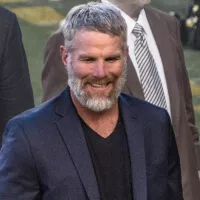
Brett Favre is a retired NFL quarterback renowned for his...

Deion Sanders nicknamed Prime Time is an American football coach...
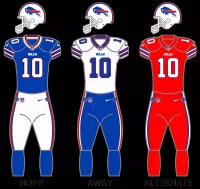
The Buffalo Bills are an NFL team representing the Buffalo...
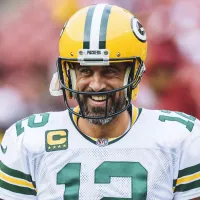
Aaron Rodgers is a professional American football quarterback currently playing...

San Francisco is a major commercial financial and cultural hub...
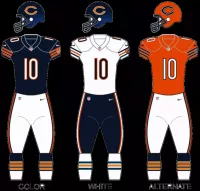
The Chicago Bears are a professional American football team based...
Trending
Dante Moore is an American college football quarterback currently playing for the Oregon Ducks He transferred to Oregon after previously...
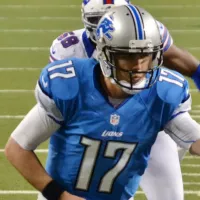
22 days ago Kellen Moore's Impact: Saints' QB Change and 2026 NFL Draft Predictions Emerge
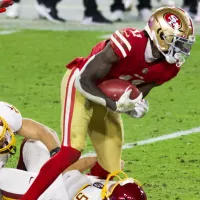
7 months ago Brandon Aiyuk Trade Rumors: Steelers Interest, Cowboys Potential, and 49ers Draft History
29 days ago Oregon Ducks' Defense Favored in USC Game; Betting Line Movement and Predictions
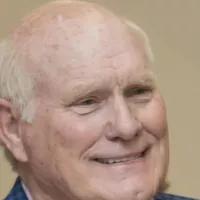
6 months ago Terry Bradshaw critiques Tom Brady's Fox contract, admitting his past deal regrets.
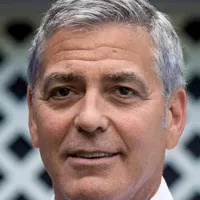
15 days ago George Clooney stars in 'Jay Kelly,' resists retirement, and inspires Noah Baumbach.
Popular

Candace Owens is an American conservative political commentator and author...
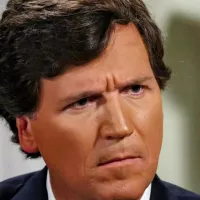
Tucker Carlson is an American conservative political commentator known for...

XXXTentacion born Jahseh Dwayne Ricardo Onfroy was a controversial yet...

Ben Shapiro is a prominent American conservative political commentator media...

Kashyap Pramod Patel is an American lawyer who became the...

Bill Gates an American businessman and philanthropist revolutionized personal computing...
